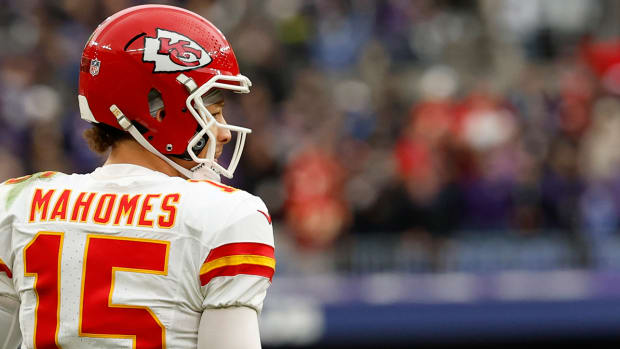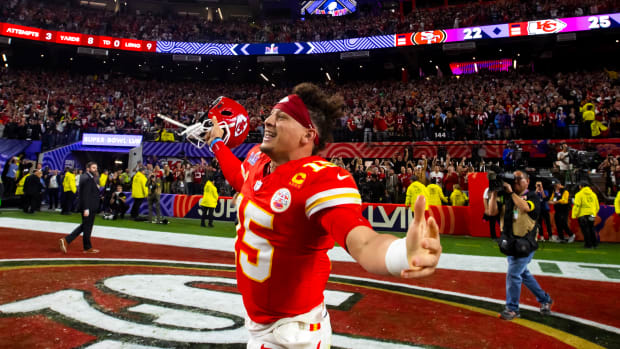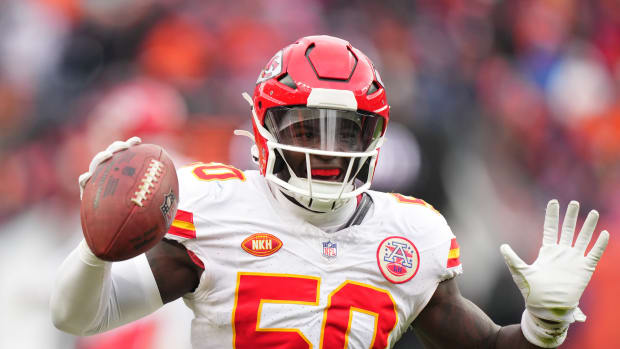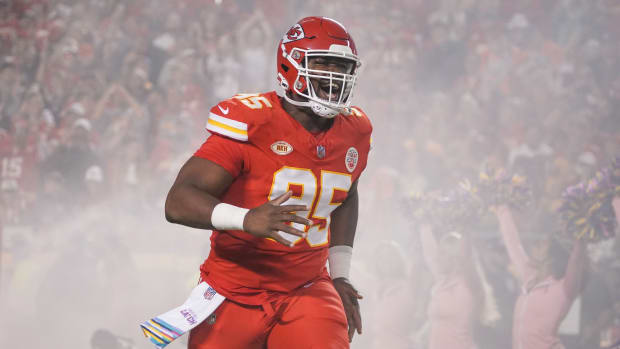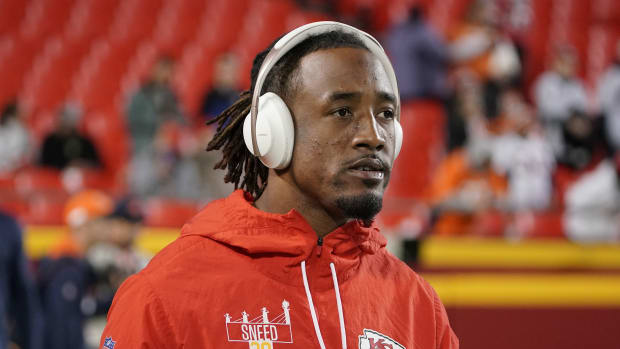Maxx Crosby, Raiders' Defense Hope To Slow Down Chiefs' Speedy Passing Game
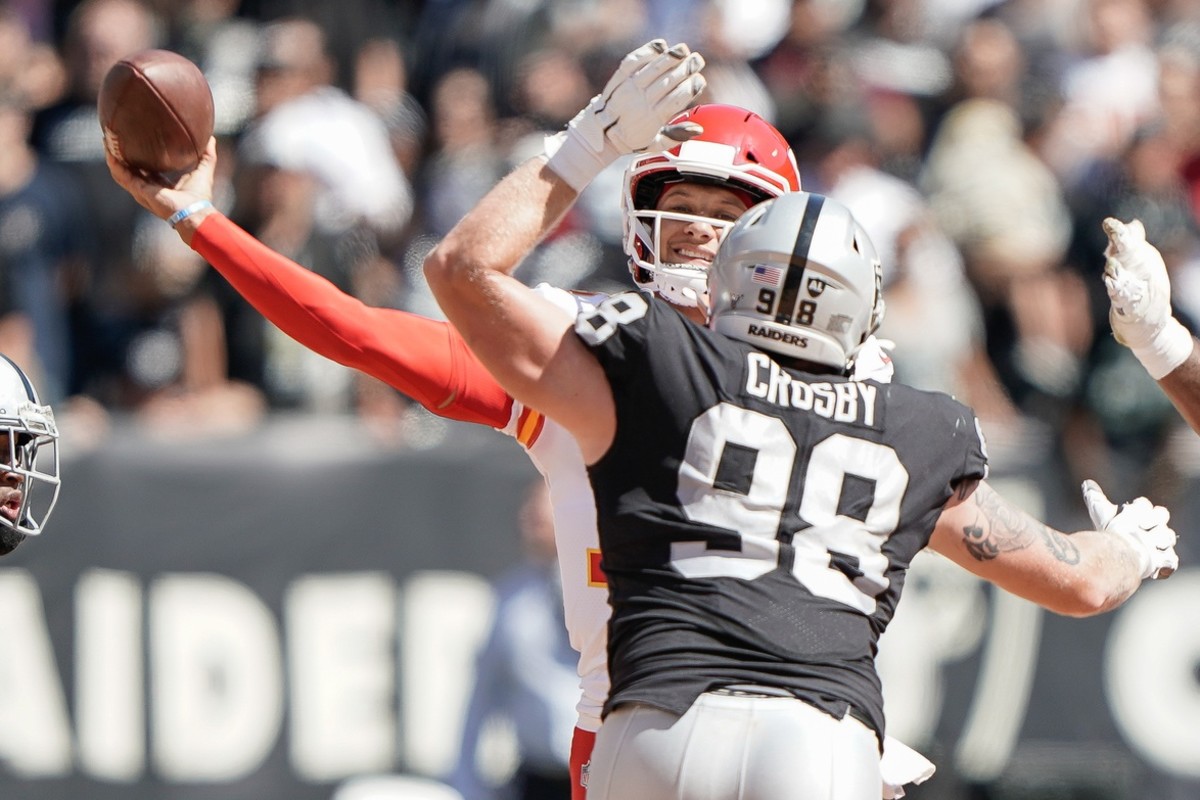
An injury-depleted Oakland Raiders defense ranks 24th in the league in yards allowed, facing off against a Chiefs offense averaging almost 400 yards per game.
Defensive Breakdown
This season hasn’t been kind to some the Raiders’ key defenders. Safety Karl Joseph, defensive end Arden Key and rookie safety Johnathan Abram have all sustained season-ending injuries. Linebacker Vontaze Burfict was suspended for the rest of the season shortly after the first meeting with the Chiefs.
The losses forced some faces into the spotlight, and several of those players have thrived. Rookie Defensive end Maxx Crosby leads the team with 7.5 sacks, and safety Erik Harris leads the team with three interceptions, two of which he returned back for touchdowns.
The Raiders run an increasing amount of Man-Free and Cover-3 of late. Their version of Man-Free coverage has them passing off shallow crossers to the linebackers rather than using the defensive backs to chase their man across the field. They rarely blitz, relying on their defensive line to get most of the pressure, although they will slant their defensive line and run twists occasionally. If they can get an offense pinned deep in its own territory or force third-and-long, they tend to ramp up pressure by sending extra men on a blitz.
Crosby’s relentless motor, speed and physical gifts give this raw pass rusher a chance against more experienced offensive linemen. He effectively runs the twist stunt inside, converting his speed to power and getting push in the middle of the pocket, although he sometimes loses his footing when coming inside. Linebacker Nicholas Morrow flows from sideline to sideline very well. He is able to cover running backs out of the backfield, and he can make sure-handed tackles in space.
Beating The Defense
The Chiefs struggled to get a run game going against the Raiders in Week 2. Defensive tackle Johnathan Hankins did an exceptional job occupying blocks in the middle of the offensive line, creating massive pile-ups and leaving no lanes to run through in the interior. Kansas City must try to hit running plays off tackle with stretch plays, outside zone and toss sweeps to the wide side of the field. This spreads the defense out, creating lanes for the running backs. They can also use the split zone to attack Crosby with a pulling blocker to try to slow him down, hitting the run in behind the puller.
Mahomes can use RPOs to get the fast-flowing linebackers to step up. This opens up the crossing routes and deep over routes behind them, or gets the linebacker caught up in traffic keeping them from getting outside to cover the quick screen game.
Utilizing the running backs out of the backfield is also effective against the Raiders, particularly when the routes serve to slow down the pursuit of the linebackers, similar to a pick play.
Mahomes can use boots and waggles to take advantage of the linebackers’ aggressiveness. Cornerback Nevin Lawson often gets caught with his eyes in the backfield when he sees the boot/waggle action, causing him to lose track of his man. The Jets used a sprint-out throwback concept to hit a wide-open running back for a touchdown last week in the red zone.
Rookie cornerback Trayvon Mullen is slow to cover the deep over route in Man coverage, which gives the receiver several feet of separation. Mullen also has a tendency to let his feet go dead when trying to tackle, causing him to lunge at the ball carrier and hoping he can wrap up and hold on until someone can finish bringing down the offensive player.

